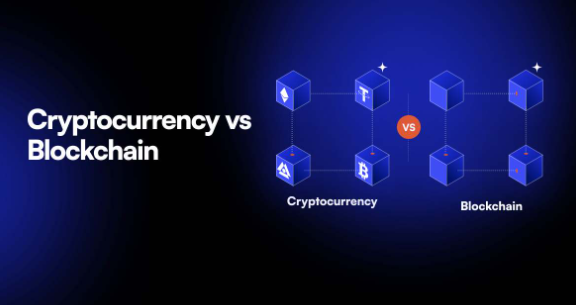Cryptocurrency and Blockchain (GS Paper 2, Policies)

Why in News?
- Former US President Donald Trump recently expressed support for Bitcoin at a cryptocurrency event.
- This development reflects a broader trend of increasing interest and skepticism towards traditional financial systems amidst global economic uncertainties.
- The rise of cryptocurrencies and blockchain technology is seen as a potential alternative to conventional financial mechanisms, though questions about their long-term viability and sustainability remain.
What is Cryptocurrency and How Does it Work?
Cryptocurrency is a decentralized digital or virtual currency that uses cryptography for security. Notable examples include Bitcoin, Ethereum, Ripple, and Litecoin. Here’s how it works:
- Decentralization: Cryptocurrency transactions are recorded on a public digital ledger called the blockchain. This ledger is maintained by a decentralized network of computers, making it difficult for any single entity to manipulate or alter the transaction history.
- Digital Wallets: To conduct transactions, users must obtain a digital wallet. This software application securely stores the user’s public and private keys, which are necessary for sending and receiving cryptocurrency and for transaction verification.
- Mining: Cryptocurrencies can be acquired through mining, a process where computational power is used to solve complex mathematical problems. This process validates and records transactions on the blockchain and rewards miners with cryptocurrency.
What is Blockchain Technology?
Blockchain is a decentralized digital ledger that records transactions across a network of computers. Here are its key features:
- Decentralized Ledger: Each block in the chain contains multiple transactions, and every new transaction is added to every participant's ledger. This decentralized nature ensures high security and transparency as no single entity can alter or delete previous transactions.
- Applications Beyond Cryptocurrency: Blockchain is not limited to cryptocurrencies. It has potential applications in various sectors:
- Financial Institutions: Used for secure and transparent transaction processing.
- Education: Could manage student records, including assignments, attendance, and academic achievements.
- Supply Chain Management: Enhances transparency and traceability in supply chains.
What is the Legal Status of Cryptocurrency in India?
In India, cryptocurrencies are unregulated but not specifically banned. The government has expressed intentions to limit their use in illegal activities and as a payment method. Key developments include:
- Taxation: In the 2022 Union Budget, India announced a 30% tax on the transfer of virtual currencies or cryptocurrency assets.
- Central Bank Digital Currency (CBDC): India has launched its own CBDC, the Digital Rupee or ‘e-RUPI,’ through a collaboration involving the National Payments Corporation of India (NPCI), Department of Financial Services (DFS), and other agencies. Unlike cryptocurrencies, CBDCs are legal tenders issued and backed by a central bank.
What are the Pros and Cons of Cryptocurrency?
Pros:
Blockchain-Driven Security and Transparency:
- Offers enhanced security and transparency, reducing fraud and operational costs.
- Provides a more secure transaction processing environment.
Potential for Innovation and Tokenization:
- Enables the conversion of assets into digital tokens, facilitating new financial instruments and asset management models.
Reshaping Global Finance:
- Tests the boundaries of trust and ownership, potentially transforming financial systems and global trade.
Potential for Financial Autonomy:
- Provides an alternative to centralized financial institutions, especially in regions with unstable economies.
Cons:
Speculative Nature and Volatility:
- Driven largely by market sentiment, leading to extreme price volatility, which undermines its utility as a stable medium of exchange.
Regulatory Challenges and Uncertainty:
- The lack of a clear regulatory framework creates uncertainty and concerns over money laundering, tax evasion, and illegal activities.
Limited Practical Utility and Acceptance:
- Limited acceptance by financial institutions and merchants restricts practical use, and the high volatility makes pricing and conversion cumbersome.
High Transaction Costs and Inefficiency:
- Often associated with high transaction fees and slower processing times compared to traditional payment methods.
Conclusion
- The rise of cryptocurrency in India reflects the nation's rapid progress towards digitalization.
- However, this expansion is accompanied by significant challenges due to the absence of a comprehensive regulatory framework.
- The lack of regulation not only creates uncertainty for businesses and investors but also poses risks related to fraud and financial crimes.
- To fully realize the benefits of cryptocurrencies and ensure a secure financial ecosystem, there is an urgent need for robust regulatory oversight and clearer guidelines to address the risks and challenges associated with this evolving technology.


